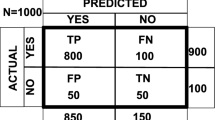Abstract
Intrusion Detection Systems (IDSs) have the reputation of generating many false positives. Recent approaches, known as stateful IDSs, take the state of communication sessions into account to address this issue. A substantial reduction of false positives, however, requires some correlation between the state of the session, known vulnerabilities, and the gathering of more network context information by the IDS than what is currently done (e.g., configuration of a node, its operating system, running applications). In this paper we present an IDS approach that attempts to decrease the number of false positives by collecting more network context and combining this information with known vulnerabilities. The approach is model-driven as it relies on the modeling of packet and network information as UML class diagrams, and the definition of intrusion detection rules as OCL expressions constraining these diagrams. The approach is evaluated using real attacks on real systems, and appears to be promising.
Preview
Unable to display preview. Download preview PDF.
Similar content being viewed by others
References
Anderson, D., Frivold, T., Valdes, A.: Next-generation Intrusion Detection Expert System (NIDES): A Summary. SRI International, Technical Report SRI-CSL-95-07 (May 1995), http://www.sdl.sri.com/nides/reports/4sri.pdf
Couture, M., Massicotte, F.: Systèmes et Languages de Détection d’Intrusion. CRC, Technical Report CRC-RP-2005-001 (July 2005)
Deraison, R., Gula, R., Hayton, T.: Passive Vulnerability Scanning - An Introduction to NeVO. Tenable Network Security, White Paper (2003), www.tenablesecurity.com/
Distefano, D., Katoen, J.-P., Rensink, A.: On A Temporal Logic For Object-Based Systems. In: Proc. IFIP Formal Methods for Open Object-Based Distributed Systems, pp. 305–326 (2000)
Eclipse Foundation, Tutorial: Querying EMF Models with OCL, http://help.eclipse.org/
Goldman, R.P., Heimerdinger, W., Geib, C.W., Thomas, V., Carter, R.L.: Information modeling for intrusion report aggregation. In: Proc. DARPA Information Survivability Conference and Exposition, pp. 329–342 (2001)
Green, C., Roesch, M.: The Snort Project: version 2.3.2., User Manual (2003), www.snort.org
Kleppe, A., Warmer, J., Bast, W.: MDA Explained. Addison-Wesley, Reading (2003)
Kumar, S., Spafford, E.: A Software Architecture to Support Misuse Intrusion Detection. In: Proc. National Information Security Conference, pp. 194–204 (1995)
Lindqvist, U., Porras, P.A.: Detecting Computer and Network Misuse through the Prediction-Based Expert System Toolset (P-BEST). In: Proc. IEEE Symposium on Security and Privacy, pp. 146–161 (1999)
Massicotte, F.: Using Object-Oriented Modeling for Specifying and Designing a Network-Context Sensitive Intrusion Detection System, Masters Thesis, Carleton University, Systems and Computer Engineering (2005)
Massicotte, F., Couture, M., Briand, L.C., Labiche, Y.: Context-Based Intrusion Detection Using Snort, Nessus and Bugtraq Databases. In: Proc. Annual Conference on Privacy, Security and Trust (2005)
Massicotte, F., Gagnon, F., Labiche, Y., Briand, L., Couture, M.: Automatic Evaluation of Intrusion Detection Systems. In: Proc. Annual Computer Security Applications Conference (2006)
Morin, B., Debar, H.: Correlation of Intrusion Symptoms: an Application of Chronicles. In: Vigna, G., Krügel, C., Jonsson, E. (eds.) RAID 2003. LNCS, vol. 2820, pp. 94–112. Springer, Heidelberg (2003)
Morin, B., Mé, L., Debar, H., Ducassé, M.: M2d2: A formal data model for ids alert correlation. In: Wespi, A., Vigna, G., Deri, L. (eds.) RAID 2002. LNCS, vol. 2516, pp. 177–198. Springer, Heidelberg (2002)
Paxson, V.: BRO: A System for Detecting Network Intrusion in Real-Time. Computer Networks 31(23-24), 2435–2463 (1999)
Roger, M., Goubault-Larrecq, J.: Log Auditing though Model Checking. In: Proc. IEEE Computer Security Foundations Workshop, pp. 220–236 (2001)
Security Focus, Bugtraq Homepage, http://www.securityfocus.com/
Sekar, R., Guang, Y., Verma, S., Shanbhag, T.: A High-Performance Network Intrusion Detection System. In: Proc. ACM Symposium on Computer and Communication Security, pp. 8–17 (1999)
Sommer, R., Paxson, V.: Enhancing byte-level network intrusion detection signatures with context. In: Proc. ACM Conference on Computer and Communications Security (2003)
Stallings, W.: Data and Computer Communications. Addison-Wesley, Reading (1996)
Tenable Network Security, Nessus Scripts, www.nessus.org/plugins/
Vigna, G.: A topological characterization of tcp/ip security. Politecnico di Milano, Technical Report TR-96.156 (1996)
Vigna, G., Kemmerer, R.A.: Netstat: A network-based intrusion detection approach. In: Proc. IEEE Annual Computer Security Applications Conference, pp. 25–34 (1998)
Vigna, G., Valeur, F., Kemmerer, R.: Designing and implementing a family of intrusion detection systems. In: Proc. ACM SIGSOFT European Software Engineering Conference, pp. 88–97 (2003)
Zhou, J., Carlson, A.J., Bishop, M.: Verify Results of Network Intrusion Alerts Using Lightweight Protocol Analysis. In: Srikanthan, T., Xue, J., Chang, C.-H. (eds.) ACSAC 2005. LNCS, vol. 3740, Springer, Heidelberg (2005)
Ziemann, P., Gogolla, M.: An Extension of OCL with Temporal Logic. In: Proc. Workshop on Critical Systems Development with UML, in conjunction with the UML conference (2002)
Author information
Authors and Affiliations
Editor information
Rights and permissions
Copyright information
© 2007 Springer-Verlag Berlin Heidelberg
About this paper
Cite this paper
Massicotte, F., Couture, M., Briand, L., Labiche, Y. (2007). Model-Driven, Network-Context Sensitive Intrusion Detection. In: Engels, G., Opdyke, B., Schmidt, D.C., Weil, F. (eds) Model Driven Engineering Languages and Systems. MODELS 2007. Lecture Notes in Computer Science, vol 4735. Springer, Berlin, Heidelberg. https://doi.org/10.1007/978-3-540-75209-7_5
Download citation
DOI: https://doi.org/10.1007/978-3-540-75209-7_5
Publisher Name: Springer, Berlin, Heidelberg
Print ISBN: 978-3-540-75208-0
Online ISBN: 978-3-540-75209-7
eBook Packages: Computer ScienceComputer Science (R0)




